Nine False Historical Facts About the Ancient World
 Our understanding of the past is fluid. Very often things we think we know about the past turn out to be false or highly distorted. Historians aren’t perfect; sometimes they make mistakes, other times they outright lie. There’s a long list of historical facts that we take for granted that aren’t true. Here are eight of the most commonly spread historic lies that are still being repeated today.
Our understanding of the past is fluid. Very often things we think we know about the past turn out to be false or highly distorted. Historians aren’t perfect; sometimes they make mistakes, other times they outright lie. There’s a long list of historical facts that we take for granted that aren’t true. Here are eight of the most commonly spread historic lies that are still being repeated today.
Historic Lie №1: Jewish Slaves Built the Egyptian Pyramids
This is one of the oldest and longest-lasting myths on the list. The idea that slaves built the pyramids likely dates back to around the 5th century BC and was only debunked in the 1990s. Two things that happened around the same are responsible for the myth.
First, the Book of «Exodus» was completed in the 5th century BC. It stated that the Israelites were slaves in Egypt, but made no mention of the pyramids or the Israelites being used as builders. Second, the Greek historian Herodotus was writing around the same time that «Exodus» was finished. In one of his works, he claimed that 100,000 slaves were used to build the pyramids. He didn’t mention the Israelites at all, however. This didn’t stop later historians from putting two and two together and getting five.
This historic lie lasted for over two and a half millennia. It appeared in school textbooks, and Hollywood movies depicted the Egyptians as cruel slave drivers. In 1977, then-Israeli Prime Minister Menachem Begin even went as far as to claim it was his people, not the Egyptians, who had built the pyramids.
In actuality, the Egyptians used trained builders to build the pyramids. In 1990, a tourist stumbled across some graves that, as it turned out, belonged to the pyramid builders. Digs were undertaken, and tombs dedicated to the Egyptian citizens who had built the pyramids were discovered.
The way the builders had been buried, and what they had been buried with, indicated they were free men, not slaves. Further archaeological discoveries proved that the workers had been recruited from low-income communities in ancient Egypt and that they had worked three-month shifts.
 For centuries, archaeologists have been studying how the Egyptian pyramids were built.
For centuries, archaeologists have been studying how the Egyptian pyramids were built. It’s believed the Greek historian also got his numbers exponentially wrong. It likely took 10,000 builders thirty years to build the pyramids. While it appears that they died young, it's likely they lived better lives as builders than they would have back home living in squalor. There is no evidence slaves built the pyramids.
And another interesting point: the people of Israel came out of Egypt with their sheep and cattle, with silver and gold. Were they really slaves? Who lived in their houses, the doorposts of which they smeared with the blood of their lambs?
Historic Lie №2: Ancient Greco-Roman Statues Were Undecorated
This is a weird one. We’ve known for a long time that sculptures and buildings were painted with bright colors in ancient Greece and Rome. People just chose to ignore it. For the longest time, representations of ancient civilizations showed them full of white marble and unpainted statues.
This is despite the fact that archaeologists had been finding statues that were stained from paint for centuries. The white marble was just so clean and beautiful that we basically decided to ignore evidence that they had once been painted. By the time of the Renaissance, clean white marble had become a symbol of Rome, and therefore, civilization. Early art historians went as far as to argue that the sculptures were supposed to be white, despite the fact that there was evidence of paint left on them.
It was so bad that the statues were defaced. Statues that were stained with paint had the paint washed off. The same went for buildings. The Parthenon in Greece still had its original paint until it was removed during the 18th century.
Worst of all, we had historical texts that described how colorful Roman cities were. When Pompeii was unearthed, it revealed a Roman Empire that was full of vibrant colors. Yet for some reason, we have clung to this idea that everything in Italy and Greece was white and clean, when in fact they were painted rather garish by today's standards.
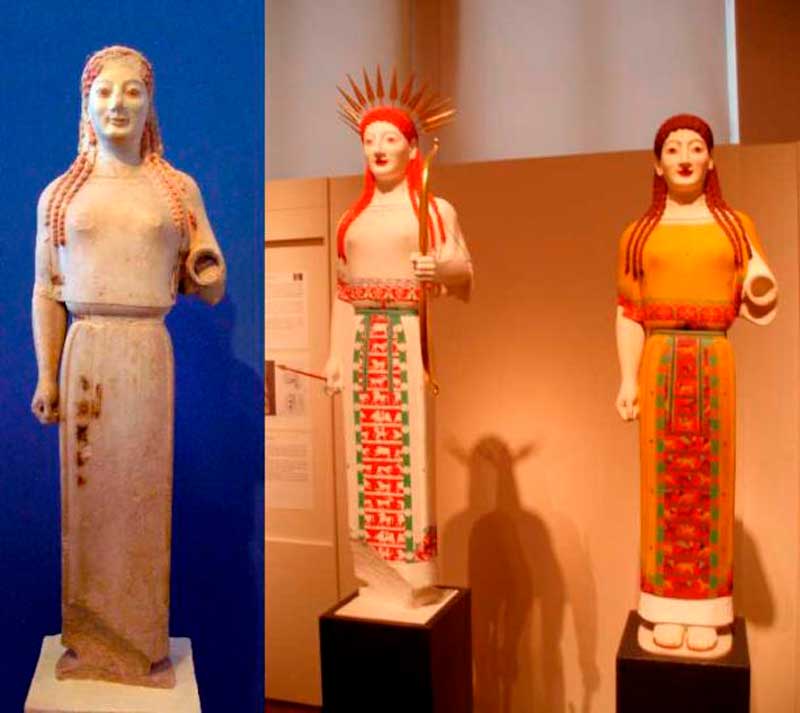 Ancient Rome and Greece were incredibly colorful, although the paint has faded from the statues that have survived. Left: ‘Peplos Kore’, circa 530 BC and Right: Reconstructed in polychrome as Athena (Both by Marsyas / CC BY-SA 2.5)
Ancient Rome and Greece were incredibly colorful, although the paint has faded from the statues that have survived. Left: ‘Peplos Kore’, circa 530 BC and Right: Reconstructed in polychrome as Athena (Both by Marsyas / CC BY-SA 2.5)
Historic Lie №3: Columbus Was Trying to Prove the Earth Was Round
The name Christopher Columbus is an anglicized Latin name for Christopher Columbus. His name is Cristoforo Colombo in Italian and Cristobal Colon in Spanish.
There is a common misconception that when Christopher Columbus made landfall in 1492, he wanted to prove to his compatriots that the Earth was round. It is also commonly claimed that Columbus struggled to get funding in the first place because potential sponsors were concerned, they would lose their investment when Columbus’s ship fell off the edge of the Earth.
Both of these are wrong. People had suspected the Earth was round for thousands of years. Since at least 600 BC, scientists, philosophers, and mathematicians had been making observations that the Earth was most likely round. During Columbus's time, educated people were still studying the lessons of the ancient Greeks, and as such, the idea that the Earth may be round wasn’t particularly shocking in educated circles.
Rather than believing the Earth was flat, Columbus thought it only had a very small circumference. He didn’t set out to prove anything other than that if he sailed west (rather than east), he would soon reach China and open up new trade routes.
He struggled to find funding because no one agreed with him. They simply thought that, in a best-case scenario, he’d get lost by sailing west rather than east. The worst-case scenario? Round Earth theory would turn out to be wrong, and Columbus would sail straight off the edge of the world, with their investment.
The issue was that potential sponsors may have been familiar with the theory the Earth was round, but it was just that: a theory. No one had yet sailed the Earth’s circumference. Even those who believed in a round Earth lacked the science to explain how it might work, as Isaac Newton and his explanation of gravity were still a long way off. In their eyes, it just wasn’t worth the risk.
This myth doesn’t even come from Columbus’s time. It was invented in 1828, when the famous American author Washington Irving published The Life and Voyages of Christopher Columbus. Irving was a better storyteller than he was a historian. When writing Columbus’s biography, he couldn’t stop himself from making some dramatic flourishes, such as Columbus setting out to prove the Earth was round. Irving’s readers were too trusting and took everything in the book as gospel. From that point onward, it became an accepted truth and it has taken decades to undo this historical lie.
 "Columbus map", drawn circa 1490 in the Lisbon mapmaking workshop of Bartolomeo and Christopher Columbus (Public Domain)
"Columbus map", drawn circa 1490 in the Lisbon mapmaking workshop of Bartolomeo and Christopher Columbus (Public Domain)
Historic Lie №4: Columbus Discovered America
This is another historic lie that looms large today. It is commonly reported that Columbus was the first person to discover America. The United States even has a whole holiday celebrating the day that Columbus supposedly discovered their country.
This ignores one important fact: When Columbus ‘discovered’ America, there were already people there - lots of them. It is widely believed that humans first settled on the North American continent 15,000 years ago at the latest. Sea levels were much lower back then, meaning all they had to do was walk across the Bering land bridge that connected Siberia and Alaska.
Up until the 1970s, these early settlers were called the Clovis peoples. DNA evidence directly connects them to 80% of all indigenous peoples in the USA today. There is even evidence that there may have been settlers even earlier than the Clovis people, but for now, the evidence is inconclusive.
So, Columbus was the first European to discover America, right? Nope. The Vikings beat him to it by at least 500 years. Archaeological evidence of Viking settlers has been found on the Canadian island of Newfoundland that shows the Vikings were there long before Columbus was.

Historic Lie №5: The Ancient Romans and Greeks Were Fine With Homosexuality
This is a fact that’s no fun to debunk. There is a common misconception that the ancient Greeks and Romans were much more accepting of homosexuality than many people today. Sadly, this is a major oversimplification.
The ancient Greeks and Romans just had a very different understanding of sexuality. Rather than seeing sex as a heterosexual versus homosexual binary, it was seen as dominant versus passive. Simply put, it was only okay for a man to have homosexual sex if he was the ‘giver’ rather than the ‘receiver’. Furthermore, class factored in. It was beyond scandalous if a man from a lower class was found to be the dominant partner over an upper-class male. In ancient Rome, a man from a noble family could have his title and even his citizenship stripped from him if he was found to be the passive partner in a homosexual relationship.
As for women, they were always the passive partner. Lesbian sex was frowned upon because it was believed it required one of the women to take the man’s role as a penetrator, which was a big no-no.
The idea that Roman high society was full of hedonistic sex parties and orgies has also been exaggerated. While it is true that some Roman leaders, like Caligula, enjoyed hedonistic lifestyles, in general, the Romans seriously disapproved of overindulgence. It was normal for a man to enjoy the company of a random prostitute or a young man, but if he did it too often and openly, it entailed terrible social consequences.
In short, ancient people weren’t more liberal than we are today. They just had slightly different beliefs as to what was normal or acceptable. Just like today, there were often high prices to be paid if you broke these prudish rules. What this ultimately led to we know from the same story. Nature does not tolerate breaking its rules.
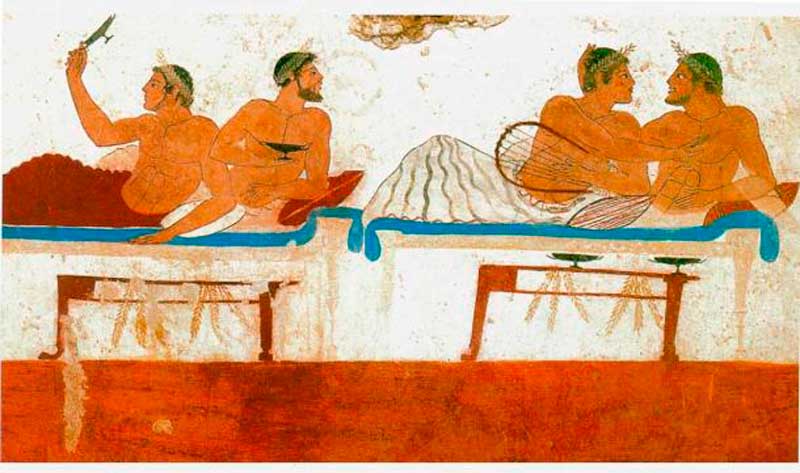 Male couples at a symposium, as depicted on a fresco in the Tomb of the Diver from the Greek colony of Paestum in Italy (Public Domain)
Male couples at a symposium, as depicted on a fresco in the Tomb of the Diver from the Greek colony of Paestum in Italy (Public Domain)
Historic Lie №6: Jesus was born on December 25th
Christmas Day is one of the most important days of the year in many countries. Christians and non-Christians alike flock together to exchange gifts and enjoy Christmas cheer. Sadly, they’re probably doing it on the wrong day.
If there was a historical figure named Jesus, we have no idea when his birthday was. There’s no biblical reason to celebrate Christmas on December 25th. In fact, the Bible points in the opposite direction. The Gospel of Luke stated that shepherds were watching their flocks at night when Jesus was born. Shepherds would only have been watching their flocks at night during the lambing season in spring. In winter, their flocks would have been corralled.
It seems the most likely reason the date was chosen is that it comes exactly nine months after March 25th, the date it is traditionally said Jesus was crucified. Early Christians believed Jesus was conceived and killed on the same date, so it made sense that he would be born nine months later in December.
Furthermore, it fits with the winter solstice, which pagans like the Romans already celebrated from December 17th to December 25th. This festival included all the hallmarks of Christmas: gift-giving, family time, and partying. When Emperor Constantine converted the Roman Empire to Christianity in the early 4th Century, the Christian church simply appropriated the Roman holiday as Jesus's birthday. The church did much the same with Easter, which was also originally a pagan holiday.
 Biblical mentions of shepherds tending their flocks indicate that if there was a historical Jesus,
Biblical mentions of shepherds tending their flocks indicate that if there was a historical Jesus, Historic Lie №7: Who Were The Three Kings and Where Did They Come From?
In Western Christianity, the feast of Epiphany, also known as Three Kings’ Day, is celebrated annually on the 6th January to commemorate the visit of the Magi, wise men, or kings from the East to the baby Jesus. The Three Kings are celebrated particularly in Spain and Latin American countries, a day marked by parades, meals and gift-giving, similar to how Christmas is celebrated on the 25th December in other parts of the world.
The image of three wise men from the East bringing precious gifts and paying homage to the child Jesus is linked inextricably with today’s Nativity scenes. Nevertheless, the story of the Magi’s visit is not found in all four of the canonical Gospels. Apart from the Gospel according to Matthew, the other three Gospels say nothing about these magi. So, who are the Magi, or Three Kings, who visited the infant Jesus?
Note that Matthew does not mention the exact number of these Magi from the East. According to tradition, however, there were three. It is likely that this number was chosen to correspond with the number of gifts presented to the baby Jesus – gold, frankincense, and myrrh.
Nevertheless, other numbers are provided by other traditions. In the Orient, for instance, tradition dictates that there were 12 Magi. Additionally, early Christian art provides different numbers of Magi. In a painting from the cemetery of Sts. Peter and Marcellinus, two Magi are shown. A painting in the Lateran Museum, however, shows three, whilst another in the cemetery of Domitilla shows four. On a vase in the Kircher Museum, eight Magi are shown.
Like the number of Magi, the names of these wise men are also unknown. Once again, it is due to tradition that we have their names. Additionally, the names given to these biblical figures differ based on tradition. In Western tradition, for instance, the three Magi were Melchior, Caspar and Balthazar. These men were said to have come from Persia, India and Babylonia respectively.
According to the Syrian tradition however, the names of the Magi are Larvandad, Hormisdas, and Gushnasaph. In the Armenian tradition, on the other hand, Kagba, Badadakharida, and Badadilma are the names of the Magi.
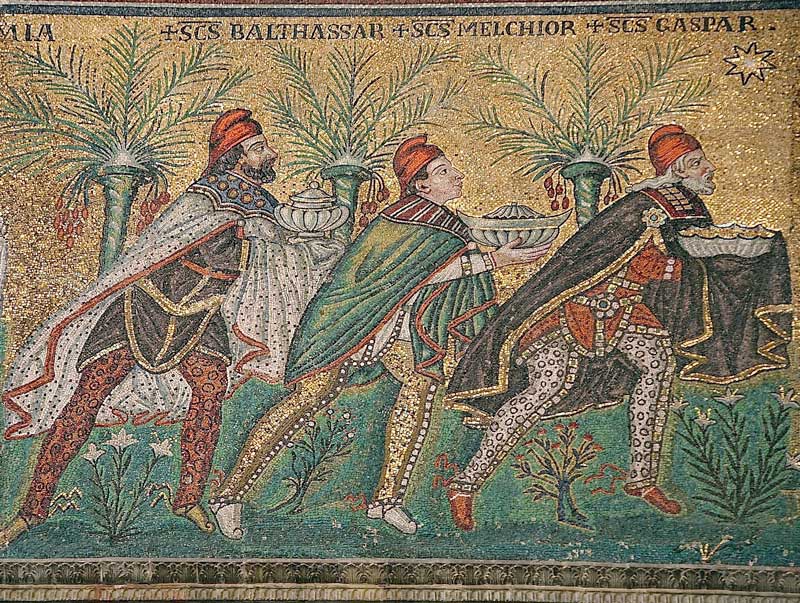 Three wolves. Byzantine mosaic from Sant'Apollinare Nuovo, Ravenna, circa 565 (restored in the 18th century).
Three wolves. Byzantine mosaic from Sant'Apollinare Nuovo, Ravenna, circa 565 (restored in the 18th century). The 3 Wise Men: Ancient Magicians?
After the Magi had paid homage to the infant Jesus, they were prepared to return to Jerusalem, as they were requested by King Herod to bring news of the child’s whereabouts. The wise men believed Herod when he claimed that he desired to go and worship the new-born king as well. In a dream, however, the wise men were warned by God not to return to Herod, and the Magi “departed into their own country another way.”
Historic Lie №8: 300 Spartans Held off the Persians at Thermopylae
Everyone loves a good underdog story, and brave heroes fighting against grave odds. This particular historic lie about the Battle of Thermopylae has served to cement the idea that the Spartans were some kind of group of ancient super soldiers.
It has been erroneously stated that three hundred Spartans held the Thermopylae pass against a vast Persian army led by King Xerxes during the Persian invasion of Greece in 480 BC. There were indeed 300 Spartans at the pass; they just weren’t alone. They were backed up by at least 4,000 allies. This isn’t to say they weren’t hugely outnumbered and doomed; they were. The story has just been exaggerated somewhat over the centuries.
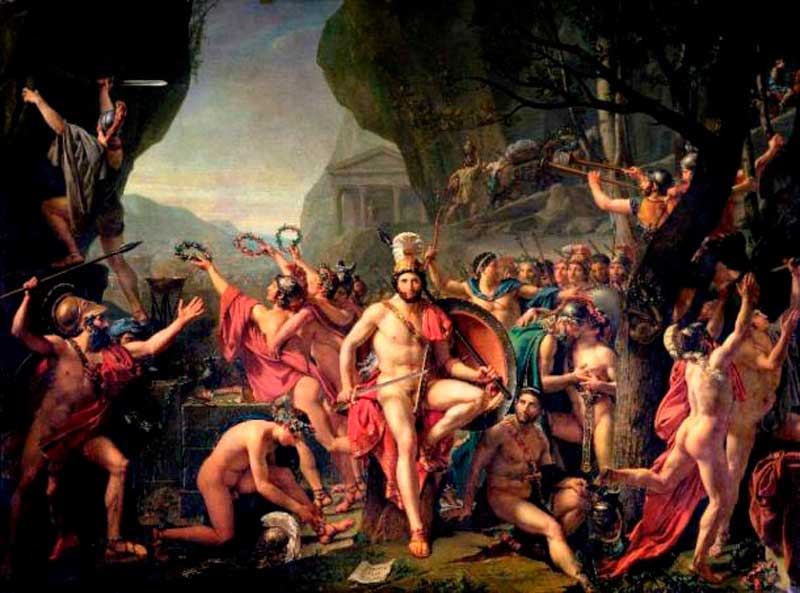 Another historic lie: While there were 300 Spartans at the Battle of Thermopylae, they were joined by thousands of allies.
Another historic lie: While there were 300 Spartans at the Battle of Thermopylae, they were joined by thousands of allies. Historic Lie №9: Cleopatra was Great Egyptian Beauty
There are two common misconceptions about Cleopatra. First, it is widely thought that she was some sort of otherworldly beauty whose looks brought men to their knees. Second, many people believe she was Egyptian by birth. Both are false.
The idea that Cleopatra was some sort of seductress has little historical backing. Ancient historians mostly wrote about Cleopatra’s intelligence and how skilled she was in the art of manipulation. It seems historians couldn’t get their heads around a woman who could outsmart her male contemporaries, so they put her success down to sex.
Cleopatra’s ancestors had quite a reputation for incest. This somewhat shallow gene pool meant that Cleopatra’s family dynasty, the Ptolemaic, were well-known for being a little odd-looking. This isn’t to say Cleopatra was described as ugly, but she wasn’t anything special. As Plutarch put it, “her beauty… was in itself not altogether incomparable, nor such as to strike those who saw her.”
She also wasn’t Egyptian! The Ptolemaic dynasty hailed from Greece and only came to rule Egypt after the reign of Alexander the Great. The rest of her family didn’t even speak Egyptian; Cleopatra was the first in her family to bother learning the local language. It seems the misconception was intentional on Cleopatra’s part. To cement her hold on power, Cleopatra represented herself as the reincarnation of the Egyptian goddess Isis.
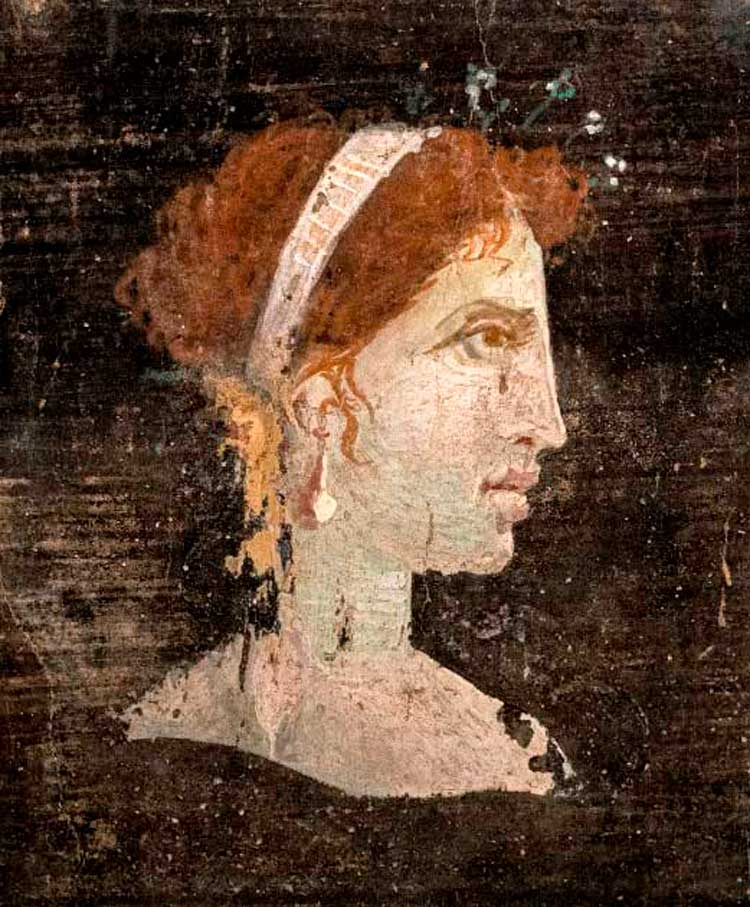 While Cleopatra was an impressive ruler, she was probably not the great beauty we see portrayed on screen,
While Cleopatra was an impressive ruler, she was probably not the great beauty we see portrayed on screen, Conclusion
Our historians and school teachers have been lying to us for centuries. Many of the ‘historical facts’ we often parrot to each other are false. Some of the historical lies are genuine misunderstandings, while others have slightly more sinister origins.
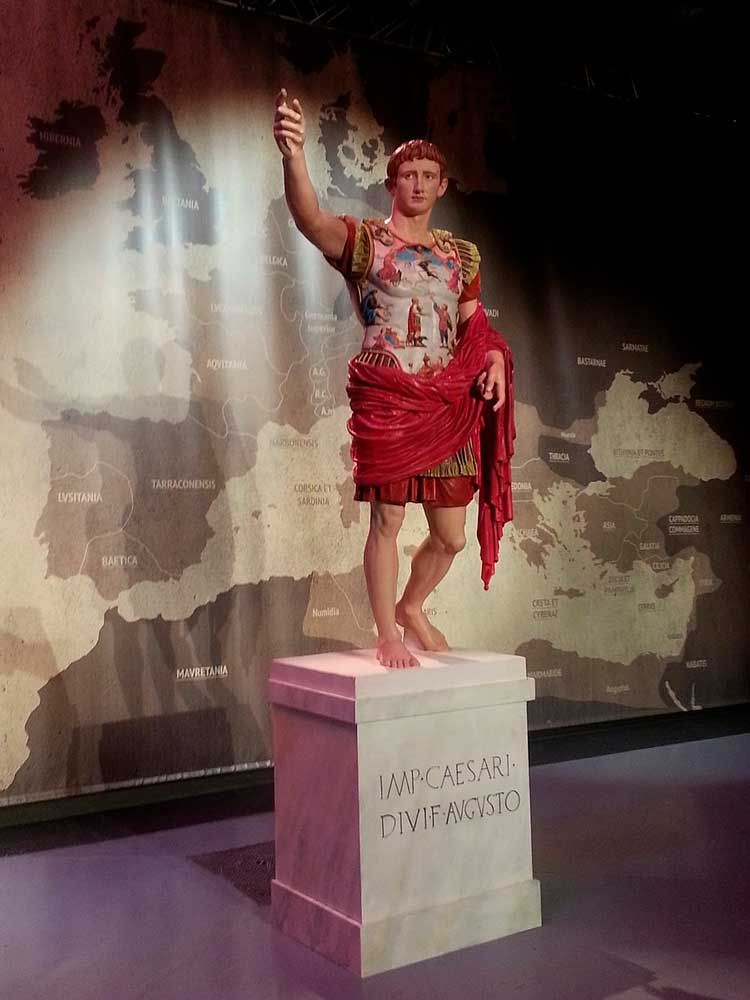 Statue of Augustus of Prima Porta, with pigments reconstructed for the Tarraco Viva 2014 Festival (Marionaaragay / CC BY SA 3.0)
Statue of Augustus of Prima Porta, with pigments reconstructed for the Tarraco Viva 2014 Festival (Marionaaragay / CC BY SA 3.0)
Some of these false facts have had real-world consequences. For example, when one museum made an accurately painted replica of Augustus of Prima Porta, they received death threats. Why? Because white Nationalists were outraged that it didn’t match the image of the ancient civilization they’d centered their twisted beliefs around.
We can’t trust everything we read on the internet. Sometimes these historic lies are genuine mistakes and misunderstandings, but other times they’re propagated by groups with their own agendas. By changing how we view the past, they can change how we view the present. And then the future will not belong to us either.



